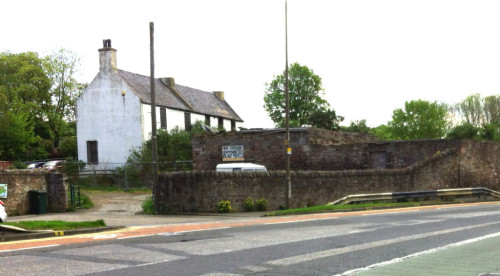Your planning permission is agreed, your finance arranged, and your construction team ready to roll. But what’s this? A letter from the Local Planning Authority insisting that:
“No development shall take place until the applicant, or their agents or successors in title, has secured the implementation of a programme of archaeology carried out in accordance with the Written Scheme of Investigation for an archaeological excavation, post excavation and publication exercise.”
![]() If you aren’t used to dealing with archaeology, alarm bells will be ringing. Like many other specialist services, archaeology can appear complex and confusing to the uninitiated. Obscure acronyms like ‘WSI’, ‘DBA’, ‘EH’ and ‘GLAAS’ cloud things further, and the unknown risk of finding important archaeology can often make first time developers feel like their new construction project is in jeopardy.
If you aren’t used to dealing with archaeology, alarm bells will be ringing. Like many other specialist services, archaeology can appear complex and confusing to the uninitiated. Obscure acronyms like ‘WSI’, ‘DBA’, ‘EH’ and ‘GLAAS’ cloud things further, and the unknown risk of finding important archaeology can often make first time developers feel like their new construction project is in jeopardy.
First things first, don’t panic! There’s a well-established network of companies like Rubicon Heritage whose goal is to help you navigate these complex waters.
We ensure that archaeological remains are investigated and recorded ahead of planned development, and will liaise on your behalf with the council archaeology officers (curators) to ensure everyone gets the best deal. Curators are the people who monitor our work on behalf of the Local Planning Authority, and once they are satisfied that we have conducted a thorough investigation of your site and published the results, they will advise the local planning department to discharge the archaeological planning condition on your site.
It’s as simple as that. Well planned and properly managed, our work shouldn’t inconvenience you or contribute significantly to your costs. In fact, we may even be able to add value to your project, taking the opportunity to engage the public with positive publicity through social and local media.
When it comes to archaeology, it’s not all bad news!
A step-by-step guide
If you really want to sleep easy at night, you may choose to have your site assessed for archaeology pre-determination, rather than wait for the curator to issue an archaeological planning condition. Whichever route you take, our experienced project managers and consultants will be here to help you at every step of the way. Here’s how…
Step 1
The curator assesses your application, weighing up the potential impact on the Historic Environment.
Step 2
The curator recommends a programme of archaeological work (Desk Based Assessment (DBA), Trial Trenching or Geophysical Survey) to support your application, giving them the information they need to make an informed decision on the impact of your project.
Step 3
The curator issues a brief to the Local Planning Authority (LPA), which they then forward to you (the developer), with suggestions that you engage a reputable archaeological contractor (normally an IfA Registered Organisation like Rubicon).
Step 4
You then forward this to us (the contractor), with a request to quote for the archaeological works. We will review the brief thoroughly, looking to design the most cost-effective approach to the work.
Step 5
Once we are appointed, we formalises this design into a WSI (a Written Scheme of Investigation) that must be approved by the curator before fieldwork can start. The WSI is basically a method statement and compliance document, showing for example the position of any test trenches, or referencing the type of documents and maps that will be consulted.
Step 6
Once we’ve completed the fieldwork, we will report back to you with recommendations on the best approach to mitigate any impact posed by your project (or proposing no further work, if little of significance is found).
Step 7
The curator will review this report, making recommendations to the LPA on whether or not to discharge the archaeological planning condition.
Step 8
If the impact is judged to be low, there may be no further work required, or just a watching brief to be undertaken on the construction of the foundations. If the impact is judged to be high, the curator will enter into negotiations with the developer to see whether a preservation in situ scenario is achievable, or to agree a programme of full excavation.
We hope this helps, and if you have any further questions for our team of specialists, click HERE and we’ll do what we can to help.

